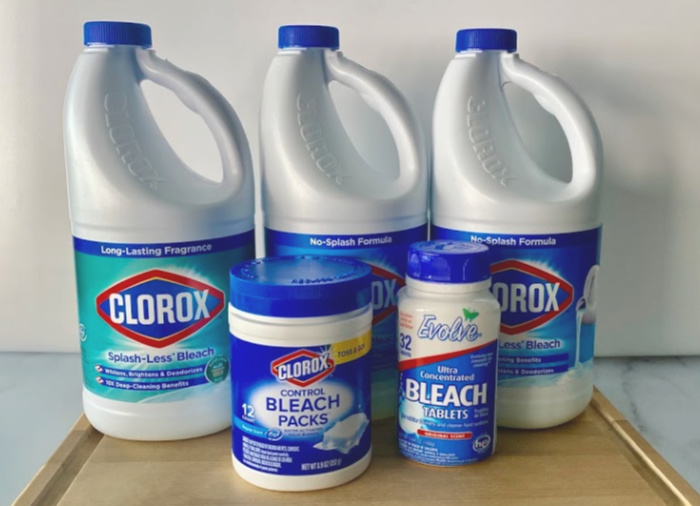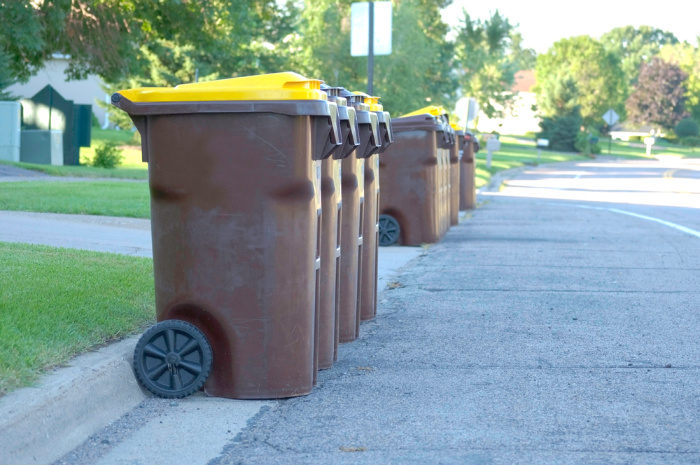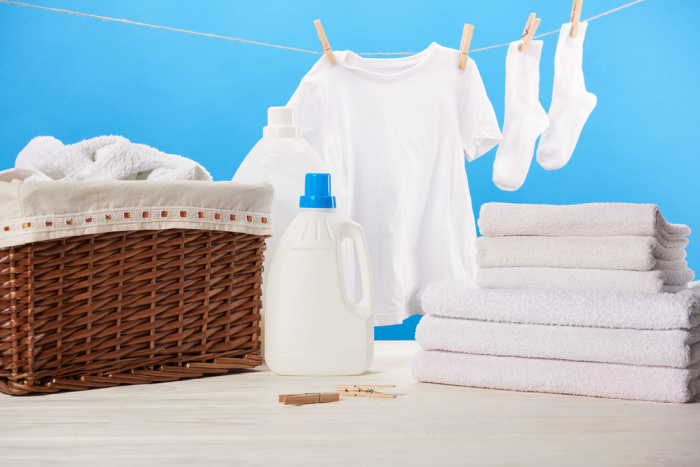
Bleach happens to be a common, yet powerful cleaning agent that you’d find underneath most kitchen sinks across America today. However, just a few decades ago, this was not the case. Bleach: everything you need to know!
It was invented back in 1785, by the French scientist Claude Berthollet, who realized that it could be used to bleach fabric. Though it’s been around for well over 200 years, it didn’t become commercially popular and widely used in Europe until the 1930s.
In fact, it didn’t make a big splash in America until the 1980s. Over the past several decades, people have learned to use bleach around the house for a number of reasons, not just for bleaching fabric.
We’ll share with you more information about bleach and a number of other ways you can use it around your home.
Types of Bleach: Everything You Need to Know
Bleach: everything you need to know. There are two different types of bleach that you should be aware of. Chlorine bleach contains sodium hypochlorite, which works great on brightening and whitening fabric.
Oxygen bleach consists of hydrogen peroxide and is safe to use on most colors while doing laundry. It also happens to be safer for you to use than chlorine bleach and works better in a powdered formula.
What are their Uses?
Oxidizing Agent
Many people have discovered that bleach works wonders on white clothing by making them look brand new again. With a little help from bleach, older t-shirts, underwear, and dingy old socks will brighten right up after one wash.
When you use an oxidizing bleach on clothing, what it’s doing is breaking down the chemical bonds of a chromophore. It actually changes the color of the molecules by making them colorless, or significantly altering the color.
So not only does bleach brighten up clothing, but it can also be used to get tough stains out of clothing. Even the toughest stains, such as ketchup or bloodstain, often can be blotted out while using bleach.
Disinfects Surfaces
Bleach can also be used to disinfect surfaces by killing bacteria, mold, and even viruses. That’s why hospitals, along with hotels and other public use places, use it to disinfect bed linens and surfaces, while restaurants use chlorine bleach to clean off surfaces used for food preparation.
Chlorine bleach is also added to swimming pools to help keep the water clean and sanitized. Some people even use bleach to whiten tile grout and clean bathroom and kitchen appliances.
It not only works on fabric stains, but typical stains found all around the house.
Disinfecting Drinking Water
Did you know that adding bleach to water that has been compromised can make it drinkable again? That’s why unscented bleach is ranked so high on a prepper’s list of basic supplies. For every gallon of water you are purifying, add 1/8 teaspoon of bleach. Recommended by the CDC
Allow it to sit for 30 minutes, and you should notice a slight chlorine odor. Make sure that you are using a bleach that contains a water solution of sodium hypochlorite between 5.25 (regular strength) percent and 6 percent (ultra-strength) and doesn’t contain any perfumes, dyes or other additives.
Used to Relieve Eczema
People that suffer from eczema may find relief in using a small amount of bleach (1/4 to 1/2 cup) added to their bathwater.
It might not completely cure patients, but it does lessen the symptoms, which may include redness, itching, or scaling.
You may wonder why the kids with Eczema feel better in the summer, it may be the chlorine in the swimming pool.
Freshen Up Garbage Cans

Does the stench from your garbage can ever become fouler than you can handle? Now we can wash the inside and outside of garbage cans, this stuff works.
After washing with soap and warm water, try using a 1/2 cup of bleach, mixed with 3/4 of a gallon of water and swish the solution around. After about 2 minutes, you can go ahead and rinse it out.
Cleaning and Sterilizing in the Kitchen
You can even use bleach to sanitize your dishes, utensils, and even your baby bottles. Wash them with soap and warm water after using the bleach and before you use them.
Using Bleach While Doing Laundry

Clorox® Regular Bleach2 is thought to be the strongest and best bleach for dealing with stains and whitening. Not only is it a disinfecting bleach, but it also works on a number of other cleaning situations around the house.
Bleach is extremely concentrated, so every time you go to use it you need to dilute it with water. When you’re using it for washing clothing, we recommend you add half a cup of bleach with the laundry detergent into the washing cycle after waiting 5 minutes from the start of the cleaning cycle.
Many washing machines don’t contain a bleach compartment, so it’s best to wait till after this step to add your clothing to the washing machine.
To help get rid of tough stains, dissolve 1/4 to 3/4 of a cup of bleach per 4 liters of water. Make sure you don’t put it directly onto the clothing but dilute it first. Then you’ll want to soak it for an hour, or overnight, and then wash.
Properly Using Bleach
It’s very important that you never mix bleach with other cleaning products around the house. Mixing it with vinegar or ammonia can create a hazardous and poisonous gas.
It’s also important that you read labels on cleaning products before you use them. Even though it may not say bleach on the bottle, if sodium hypochlorite is present, mixing products can be dangerous.
When you’re using it to clean, make sure that you have good ventilation by leaving windows so that you don’t inhale the fumes. Failing to do so can cause sore throat, coughing, and make it difficult to breathe.
Health Concerns
Bleach that is extremely potent and concentrated can be an aggressive irritant if it comes into direct contact with your skin, so you need to be careful when using it.
Direct exposure will cause itching, drying skin, or even leave harmful burns. That’s why you should wear protective gloves while using bleach.
Ingesting bleach can also be extremely dangerous. It can cause damage to your esophagus and stomach, which can lead to death. You might be surprised how one can accidentally swallow bleach, but it happens more than you might suspect.
If you believe someone in your family has ingested any amount of bleach, it should never be taken lightly, and you should call poison control for assistance.
It’s also important for you not to force yourself to vomit if you have accidentally consumed bleach.
This can cause even more harm to your lungs and make your situation worse. If after one hour, a person is experiencing chest pain, vomiting or difficulty swallowing, then you need to get yourself to the ER. It is critically important to keep all cleaning products away from children, and particularly bleach.
Other Posts Like This:
- Witch Hazel: Everything you need to know
- Green Tea: Everything you need to know
- GMO Foods: Everything you need to know
Final Word
Are there other uses for bleach that you’ve come across in your home? What surprised you the most on its many uses? Bleach: everything you need to know. Please stock up, we must be prepared. May God bless this world, Linda
Copyright Images: Laundry Basket Depositphotos_223023852_s-2019, Garbage Cans Depositphotos_9452441_s-2019
The post Bleach: Everything You Need to Know appeared first on Food Storage Moms.
* Source


No comments:
Post a Comment